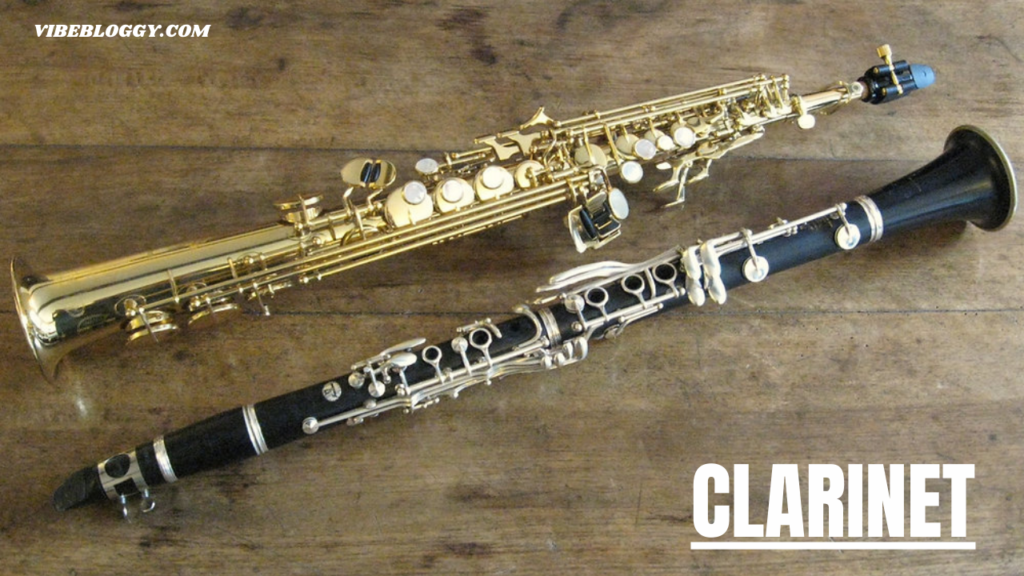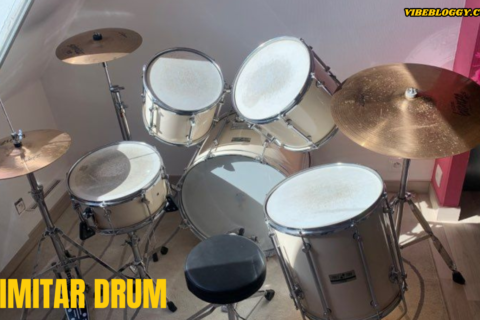Introduction
The clarinet is a woodwind instrument characterized by its cylindrical shape and single-reed mouthpiece, which produces sound through the vibration of the reed against the mouthpiece. It consists of several parts, including the mouthpiece, barrel, upper joint, lower joint, and bell, allowing for a wide range of pitches and expressive capabilities. Clarinets are commonly made from wood or plastic and come in various sizes and keys, with the B♭ clarinet being the most widely used in orchestras. Its design includes a series of metal keys that facilitate playing chromatic notes and trills, making it versatile for both solo and ensemble performances. The instrument’s rich timbre and dynamic range make it a favorite among musicians in classical, jazz, and contemporary music settings.
The History of the Clarinet
The clarinet’s origins trace back to the early 18th century. Johann Christoph Denner, a German instrument maker, modified an existing single-reed instrument called the “chalumeau,” giving birth to the clarinet we know today. His design featured an improved mouthpiece and the addition of a register key, which significantly increased the instrument’s range.
Throughout the centuries, the clarinet evolved. By the 19th century, it had become a staple in classical music compositions, thanks to composers like Mozart and Brahms. The clarinet later found its place in jazz, especially during the swing era, with famous players like Benny Goodman leading the charge.
Anatomy of the Clarinet
Every part of the clarinet plays a crucial role in producing its signature sound. Understanding each component helps in better handling, maintenance, and performance.
Mouthpiece: The mouthpiece holds the reed and shapes the sound. The right combination of reed strength and mouthpiece quality greatly impacts tone and playability.
Barrel: Connecting the mouthpiece to the main body, the barrel helps fine-tune the instrument. Many players experiment with different barrels to adjust tuning.
Keys: The clarinet features a complex system of keys that cover tone holes. These keys enable players to produce various notes across the instrument’s wide range.
Body: Made from wood or plastic, the body houses the tone holes and keys. Wood clarinets, particularly those made from African Blackwood (grenadilla), offer a warmer, richer sound.
Bell: The bell amplifies lower notes. While it might seem simple, the shape of the bell can affect tonal projection and clarity.
Different Types of Clarinets
The clarinet family consists of various members, each tuned to different keys and serving different musical purposes. Some common types include:
B♭ Clarinet:
This is the most widely used clarinet in both orchestras and bands. Its flexibility and rich tone make it ideal for a range of genres.
A Clarinet:
Primarily found in classical music, especially in orchestral pieces, the A clarinet produces a slightly darker tone compared to the B♭ clarinet.
Bass Clarinet:
Larger than the standard clarinet, the bass clarinet produces deep, resonant tones. It often plays an essential role in both orchestral and jazz settings.
E♭ Clarinet:
This smaller, higher-pitched clarinet adds brightness to ensemble performances. It’s frequently used in military bands and some symphonic works.
Alto Clarinet:
Similar to the bass clarinet but slightly smaller, the alto clarinet fills a middle range, bridging the gap between higher and lower clarinets.
How to Choose the Right Clarinet for You
Choosing a clarinet depends on several factors. Beginners usually start with a B♭ clarinet due to its versatility and widespread use. However, personal preference, musical style, and budget also come into play.
Material:
Plastic clarinets are durable and affordable, making them ideal for students. Professional players, on the other hand, often opt for wood clarinets, which produce a superior sound quality.
Reed Strength:
Beginners should start with softer reeds, usually rated 1.5 to 2.5. As a player’s embouchure strengthens, they can move to harder reeds, which offer more tonal control.
Brand:
Popular clarinet brands include Buffet Crampon, Yamaha, and Selmer. Each brand has its strengths, so trying different models helps in making an informed decision.
Mastering Clarinet Technique
Playing the clarinet requires developing specific techniques that bring out the instrument’s full tonal potential. Even small adjustments in posture or finger placement can significantly improve sound quality.
Embouchure:
A correct embouchure is essential for sound production. Players should keep the lower lip over the bottom teeth, gently press the reed with the upper teeth, and form a seal around the mouthpiece. Over time, experimenting with small adjustments allows for better sound control and endurance.
Breathing:
Mastering breath control is crucial for woodwind instruments. Clarinetists should practice diaphragmatic breathing, which provides steady air support without tension. Long tones help develop breath control and improve tone quality.
Finger Placement:
Correct finger placement allows for faster note transitions. Keep fingers close to the keys to minimize movement, and practice scales daily to develop muscle memory.
Articulation:
Tonguing, or articulation, helps create distinct notes. Players should gently touch the reed with the tip of the tongue to separate each note. Overly forceful tonguing can produce unwanted harshness, so practicing light articulation is key.
Tips for Improving Tone and Intonation on the Clarinet
Developing a beautiful tone requires practice and careful listening. To achieve a resonant sound:
Use Proper Breath Support:
Always play with strong, controlled airflow. Weak breath support results in a thin, airy sound.
Focus on Embouchure:
Keep a steady embouchure without unnecessary tension. Too much pressure on the reed can restrict vibration, leading to a muffled sound.
Choose the Right Reed:
Reeds wear out over time, so rotating between several reeds extends their lifespan and maintains consistent tone quality.
Play Long Tones:
Long tone exercises help players focus on sound production and breath control. This practice also improves endurance.
Advanced Techniques for Experienced Players
Once a player feels comfortable with basic techniques, they can explore advanced methods to expand their musical expression.
Altissimo Register:
The altissimo register covers the highest notes on the clarinet. Achieving a clear sound in this range requires precise control of air pressure and embouchure. Start by practicing chromatic scales to gradually build comfort in this range.
Circular Breathing:
Circular breathing allows players to produce continuous sound by inhaling through the nose while simultaneously pushing air out of the mouth. This technique proves particularly useful for long, uninterrupted passages in solo performances.
Extended Articulations:
Double and triple tonguing techniques enhance speed and clarity in fast passages. Mastering these articulations involves coordinating tongue movements with finger transitions.
Maintaining and Caring for Your Clarinet
Regular maintenance ensures the longevity of a clarinet and preserves sound quality. Simple care routines make a big difference in performance.
Cleaning the Instrument:
Always swab the clarinet after playing to remove moisture. This prevents the buildup of condensation, which can damage the wood and affect tone.
Reed Care:
Reeds require proper storage in a reed case to prevent warping. Rotate between reeds to ensure they wear evenly.
Key Maintenance:
Over time, keys may become sticky or misaligned. A technician should regularly adjust and lubricate the keys to ensure smooth operation.
Regular Check-Ups:
Wood clarinets expand and contract with humidity changes, so annual check-ups by a professional repairer prevent cracks and other issues.
Famous Clarinet Players and Their Influence
Several clarinetists have left an indelible mark on both classical and jazz music.
Benny Goodman:
Known as the “King of Swing,” Benny Goodman revolutionized jazz clarinet playing. His technical prowess and impeccable swing timing set a high standard for future jazz musicians.
Sabine Meyer:
One of the most celebrated contemporary classical clarinetists, Sabine Meyer has performed with major orchestras worldwide. Her interpretations of Mozart’s and Brahms’ clarinet works have won widespread acclaim.
Martin Fröst:
Swedish clarinetist Martin Fröst is known for his innovative performances, often blending traditional classical music with modern elements. His exceptional technique and creativity inspire clarinetists globally.
Conclusion
Mastering the clarinet takes time, dedication, and attention to detail. Whether you’re just starting or looking to refine your technique, the clarinet offers endless opportunities for musical expression. From choosing the right instrument to mastering advanced techniques, every step enhances your playing experience. Keep practicing, stay patient, and enjoy the journey with this remarkable instrument.
Also Read: Techdae.frl Drives Digital Transformation in Today’s Business World
FAQs
How do I improve my embouchure on the clari net?
Consistent practice of long tones and breath support exercises helps develop a strong embouchure. Also, avoid excessive pressure on the reed to allow for free vibration.
What are the best reeds for beginners?
Beginners should start with softer reeds, usually in the 1.5 to 2.5 range. Softer reeds allow for easier sound production while building embouchure strength.
How often should I swab my clari net?
Swab your clarinet after every playing session to prevent moisture buildup. Regular cleaning ensures better sound and extends the life of the instrument.
Can I play clarinet in a jazz band?
Yes! The clarinet plays an essential role in many jazz genres, especially swing. Learning jazz articulation and improvisation adds a new dimension to your playing.
What’s the difference between a plastic and a wooden clarinet?
Plastic clarinets are durable, affordable, and great for beginners. Wooden clarinets, made from materials like grenadilla, produce a warmer, richer tone preferred by advanced players.
How do I transition to the altissimo register?
Start by practicing chromatic scales, focusing on breath support and embouchure adjustments. Gradually, you’ll build confidence in hitting the higher notes.






